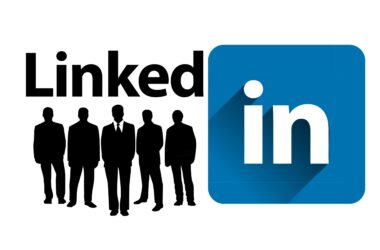For salespeople, a customer relationship management (CRM) solution is essential – you simply cannot work in the modern B2B environment without one.
In fact, here’s an interesting fact to support what we’re saying; CRMs can potentially increase sales by up to 29%, sales productivity by up to 34% and sales forecast accuracy by 42% [Salesforce].
In short, CRMs help salespeople track leads and deals in various stages of the pipeline. The metrics, reports and data analysis provides 360-degree visibility into current and potential customers’ relationship with the company. As a bonus, it also helps improve the overall relationship with clients by facilitating customer retention – combined, these factors work to have a positive impact on the bottom line.
What this means is that your CRM – regardless of whichever you’ve opted for – has a ton of untapped opportunities that can rocket your sales starting today.
Think about it: you’ve probably pulled in hundreds or thousands of leads through sales and marketing campaigns over time. But out of these, how many have actually converted into customers or how many customers have turned into loyal clients?
These leads are in your sales funnel and if you’ve labelled them right (e.g. lost, closed, etc.), you can easily spot them. And they are exactly who you need to re-engage as part of your CRM lead generation effort.
CRM Lead Generation
Besides running multiple sales and marketing campaigns to pull in leads, and nurture them into paying customers, look into your database.
This is equally important if you want to take full advantage of your CRM and its functionality. The idea is to return to leads or ‘contacts’ who know you or have had a conversation with someone in your company, but could not sign up due to various reasons.
By doing this, you can also cut down on your prospecting and lead mining costs – and of course, extract the maximum ROI from your existing database.
Here are a few suggestions on how you can practically do this:
Data Enrichment And Cleansing
Let us reiterate here – the contacts sitting around in your database are a goldmine for CRM lead generation. The only catch is that you will need to carry out one essential task – and that is data enrichment and cleansing.
Remember, data degrades at rate of 2.1% per month [Marketing Sherpa]. Simply put, a significant chunk of your data goes ‘bad’ with every passing month. In fact, with heightened employee turnover and no end in sight, there’s a good chance that this figure will continue to increase.
In practical terms, data enrichment and cleansing allow you to effectively monitor your contacts for certain changes like:
-
-
- Job changes
- Promotions
- Position changes
- New funding
- Shift in interests
- Shift in business focus, etc.
-
When you’re able to identify these changes, you can effectively start the conversation with the lead again – or even approach the same account through a different decision maker. That’s the power of having an up-to-date database.
Read more: What’s Customer Data Enrichment?
Contact New Decision Makers
This is another strategy that should strengthen your CRM lead generation efforts – for the accounts that were qualified but did not close, it’s a good idea to reach out to new decision makers (along with the contact or person you were already talking to).
What this will do is create a bit of urgency for the original lead, especially if the new decision maker you’re targeting is a senior level executive.
Enrich Data For Promotion Tracking
If the lead you were talking to has been promoted in the past month or so, then you have the perfect reason to reach out to them (to say congratulations – never underestimate the power of follow ups). Secondly, this could indicate that they’ve shifted into a better position and now have more authority to make a decision.
The main advantage here is that these people know your company and services/products already – all you have to do it reiterate how it can solve ‘x’ problem better than the competitor’s solution.
Read more: Importance Of Email Follow Ups For Sales
Cleanse Data For New Job Tracking
Despite the job market being somewhat uncertain the past couple of years, statistics highlight that around 30% of the workforce changes jobs every year [Careers Advice Online].
So, if the contact you were talking to has left the account (company they worked for) and shifted to a new position, then you two new opportunities to follow up on.
1 – You can enrich your database with a new contact for the old account and touch base to see if the time is now right for them.
2 – Since your original prospect already knows you and has engaged with you before, they might be more willing to introduce your product into their new workplace – especially if they have the final authority and you have some advantage over the current solution they’re using. Either way, it’s always better to check back in and see if they’re interested.
Bottom Line
These are just a few examples of what value your database or CRM holds for lead generation.
If you monitor leads in your pipeline or lost deals, then you already know the importance of keeping everything up to date. If you’re not, then this strategy presents an excellent opportunity for you to up your sales game this quarter.
Want to learn how we can help you with your CRM lead generation efforts? Fill out our demo form today.









